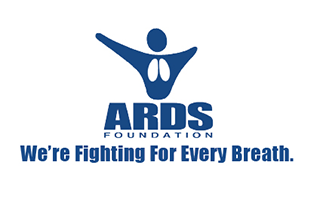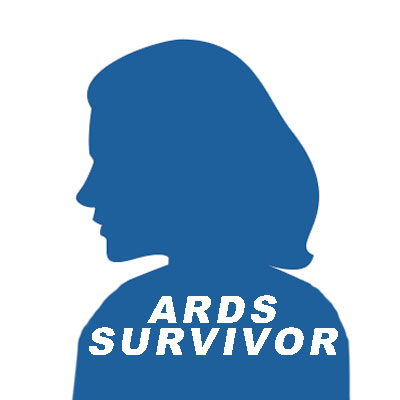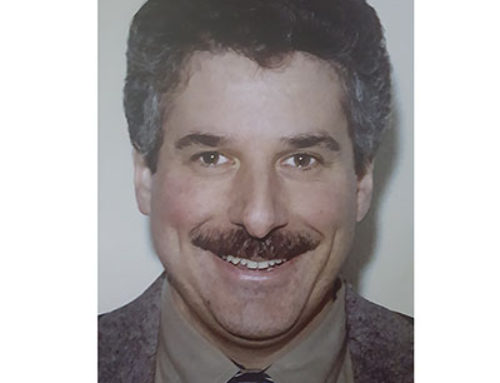On February 17, 2001, sixty-five year old Joan was driving home from work and had a very serious car accident. She was taken by Flight for Life to Rockford Memorial Hospital, the nearest trauma center where physicians initially found she had a break in the C2 (neck) vertebra but fortunately no cord damage. Joan also had a fractured pelvis and a collapsed lung. (A C2 fracture was what Christopher Reeves had after his accident.) Joan lived in Wisconsin but worked as a public health nurse in Illinois. The accident occurred at the border of the two states.
On February 18, 2001, it was found that Joan actually had four breaks in the pelvis, four fractured ribs, the third lumbar vertebra along with the 2C vertebra and the clavicle. They also found some very small blood spots on the brain from the impact of the accident.
The next morning they called Joan’s husband because she became very lethargic and had labored breathing. He gave permission for Joan to be placed on a ventilator. She was unresponsive the entire day. Her blood tests were behaving oddly suggestive of an infection or an internal bleed. A cat scan revealed a puncture wound in the small bowel, which necessitated immediate surgery.
On February 19, 2001, Joan started to improve; she had good color and no sign of infection. The CAT scan showed improvement in the brain bleed and the C2 fracture showed evidence of healing. Plans were to wean Joan from the vent. Over the next two days, Joan continued to improve over the next two days and a feeding tube was put in. Chest x-ray showed some cloudiness and ARDS was a consideration so Joan was kept on the vent.
The next day it seemed more likely that it was ARDS, and Joan was put on a rotator bed and additional Lasix was started for all the edema.
By the February 23, 2001, the chest x-ray did not worsen and things looked more stable, it was felt that she might have been on the verge of ARDS but holding her own. Joan remained heavily sedated because of the pain she experienced. The vent was changed at this point to one felt to be more appropriate if it were ARDS.
On February 25 and 26, Joan showed improvement. If she had not had an odd reaction with one pupil, they might have weaned her off the vent as the blood gases were good. The vent was dialed back to 12 from 14, and by March 1, 2001, the vent was turned back to 6. Joan’s lungs showed considerable improvement, wheezing gone and volume improved. At this point, they wanted to get her off the vent the next day.
But her hemoglobin had dropped; Joan needed two units of blood and then became more alert and responsive. The next day, instead of getting off the vent, the setting was increased to 10 bpm but by the next day they started to lower the vent settings.
From March 4, 2001 until March 13, 2001, Joan was riding the ARDS roller coaster, with typical ups and downs that are characteristic with ARDS. Finally, on March 14, 2001, doctors decided to put in a trach. On March 15, Joan was in a regular bed and the vent was down.
Another roller coaster ride occurred on March 16, when a little fluid was found on the lung. But by March 19, 2001, Joan was able to tolerate a full minute off the vent without panicking.
On March 21, some in room therapy was started and the positive pressure support was being lowered by 1 cm. every 8 hours. By March 25, Joan was out of ICU; the work of OT, PT and speech therapy began in earnest. By March 27, Joan was off the vent for 10 hours. The weaning continued along with physical therapy. Joan’s fractures continued to heal. On April 4, 2001, Joan was in rehab and the real word began.
On April 22, 2201, Joan’s trach was removed and on April 23, Joan went home. home. Joan says that this was nine very painful weeks and nine weeks of riding the roller coaster but she made it home. She continued therapy and finally, the neck brace was removed a month and a half later.
Joan states: “I survived ARDS and am very thankful. At the ripe old age of 65 I feel I did pretty darn well to beat the odds. I feel that my physical condition prior to the accident played an important role in my recovery. It is 6 years now. I look at things differently. I was not able to go back to work; my endurance was limited for a long time. I do have some scarring in the lungs and some fibrotic changes but walk about 2 miles every morning, am doing a lot of active volunteer and committee work and pray daily for the others that have ARDS.”
Joan feels that family members who are going through the ARDS ordeal should try to be patient and stay prayerful. Some may have a brief illness before recovery but for others it can be a lengthy trip with many obstacles in the road. Do not give up hope. The support of Joan’s family, and especially her husband, gave her the incentive she needed to fight through the roughest of times.
Joan says that one of the greatest incentives during her rehabilitation was her little Schipperke who inspired her to get up and get going. She needed her walks and was very patient with Joan.








